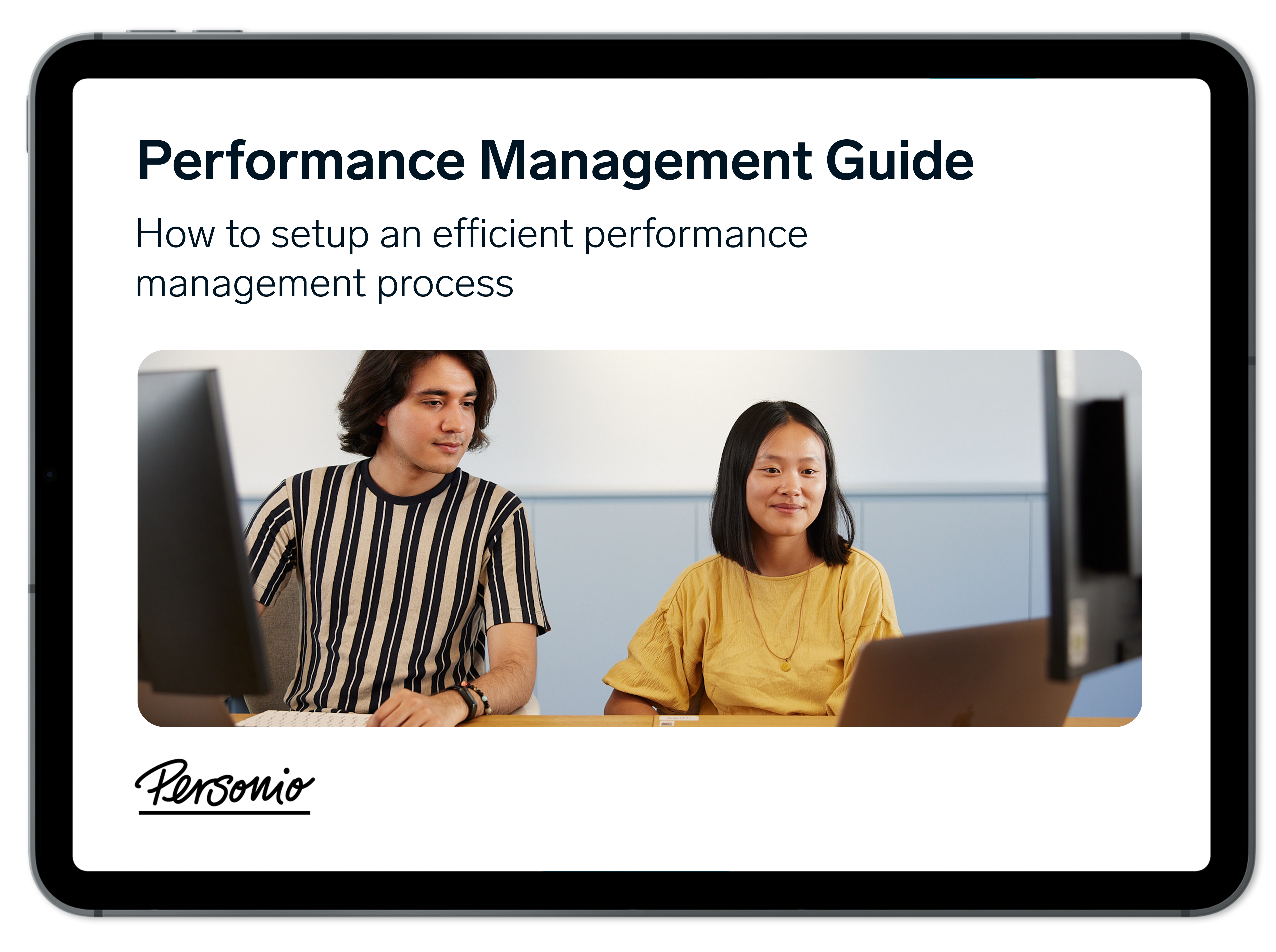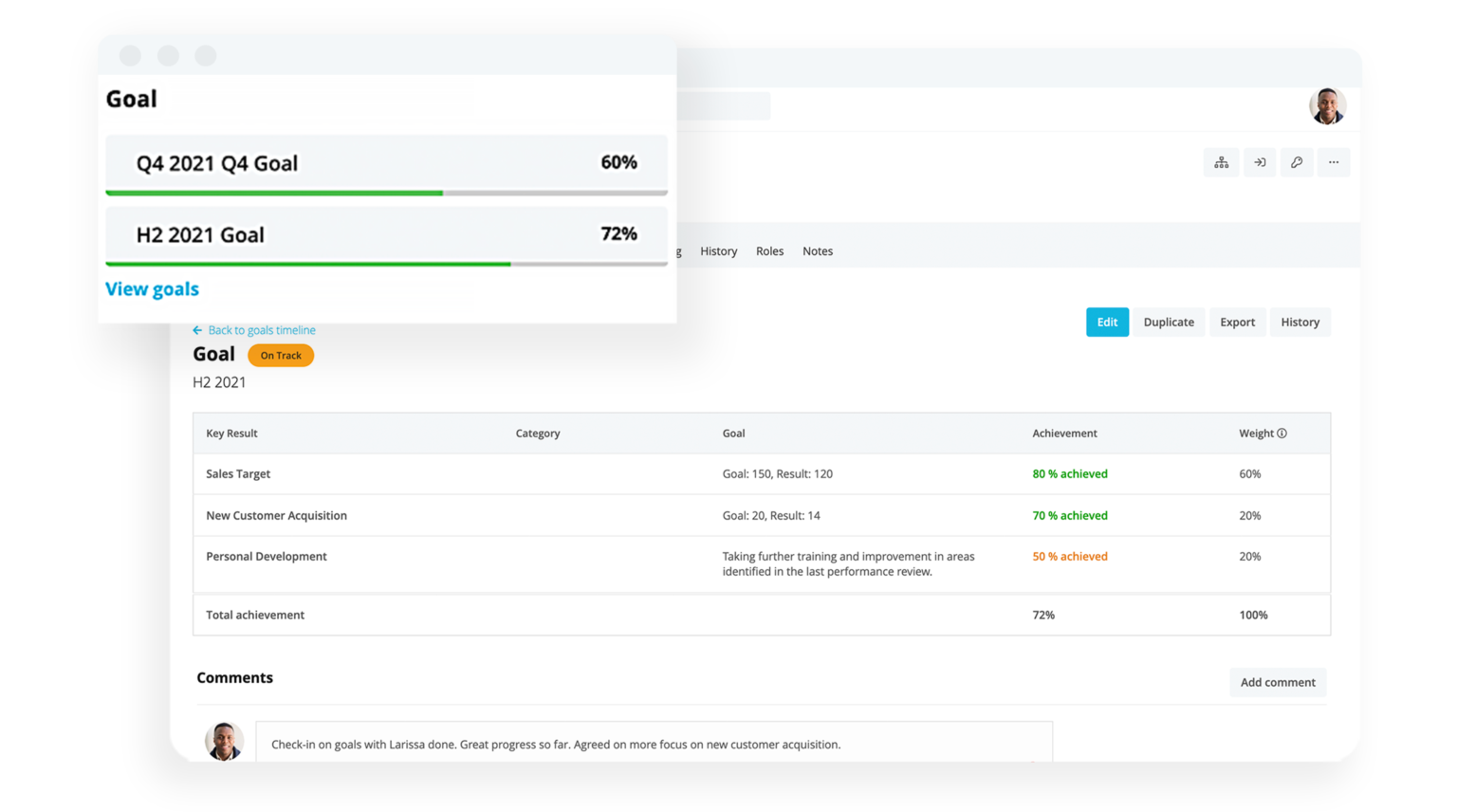Hybrid Workplace Model: Everything You Need To Know

In this article, we aim to explain how a hybrid workplace model works. We’ll dive into the pros, cons and how to make this kind of arrangement work for your company. Plus, we’ll include some helpful best practices to help it stick, too.
Key Facts
A hybrid workplace model can be linked to increased employee satisfaction.
Robust internal communication is necessary to establish a successful hybrid model.
HR software can make the transition to a hybrid model of working easier.
What Is a Hybrid Workplace Model?
A hybrid workplace model is a flexible work environment where an employee spends part of the week working remotely and the other in the office. That said, a hybrid workplace is not a one-size solution, as it can vary dramatically depending on the organisation.
In some companies, employees have complete control over how they divide their time between in-office and remote working days. In other environments, there’s a set schedule by department, employee type or another criteria.
Hybrid Workplace Model Advantages & Disadvantages
To fully understand if a hybrid model works for your organisation, let’s explore its benefits and drawbacks…
Benefits of a Hybrid Workplace Model
Some of the benefits of a hybrid workplace model include:
Improvement of work-life balance: Splitting time between working from home and working from the office can improve work-life balance. The Policy Institute at King’s College London even reported that roughly 80 per cent of people working remotely in London (at least once a week) enjoy the experience.
Less money on office space: If you have fewer people in the office at one time, you can downsize your office space. Plus, with fewer people and less emphasis on location, you can potentially relocate your office to a less expensive area.
Increase of job satisfaction: A greater feeling of autonomy and improved wellbeing are all factors that contribute to job satisfaction. And the more people are satisfied with their jobs, the more likely they are to stay, increasing overall retention.
Greater sense of safety: When you offer a hybrid model, you can better accommodate safety protocols in the workplace. For instance, if someone feels under the weather but doesn’t want to take sick leave, they can work from home. They’ll feel more comfortable, avoid the commute, and they won’t get anyone sick at work.
Disadvantages of a Hybrid Workplace Model
Some obstacles when implementing the hybrid workplace model include:
Getting it right can be difficult:It might take a few tries to find the best setup for your organisation, but that shouldn’t discourage you from trying the model. It just means there’s no one-solution-fits-all approach to this work environment.
Shifting management style: Supervisors will likely need to rethink how they interact with team members. What once worked when everyone was on-site isn’t likely to transition to a hybrid model. This can feel intimidating, but there are tips to help management make the shift.
Less connectivity: Working full-time in an office environment can give people a greater sense of connection. And if you aren’t careful with the transition to a hybrid model, it can result in feelings of isolation, which can be unhelpful for mental health and productivity. You’ll have to find other ways to foster workplace relationships.
Access to fewer tools: An office environment has the tools people need to do their jobs. So when you go hybrid, you’ll have to ensure everyone has what they need to be successful. This is certainly made easier with the right tech tools, however.
The Key to Strategic Performance Management

Use our guide to set up your next great performance process. Find out how to strategically manage, motivate and retain employees in our practical guide.
Download NowHow To Implement a Hybrid Work Environment
To implement a hybrid work environment where the pros outweigh the cons, here are some steps you can take…
Talk to Your Employees
Open the discussion to all employees through anonymous pulse surveys, open office hours or holding a lunch to solicit feedback. Be sure to ask overall attitudes on a hybrid work environment, their ideal schedules, the type of flexibility they would like and similar questions. If you start the process by taking a temperature check, you’ll better understand if the hybrid workplace model is the right move for your organisation.
If it is, you can figure out what your employees are looking for instead of making assumptions based on statistics or what other companies have done.
Implement the Right Technologies
If people are eager to try the hybrid approach, it’s time to consider the logistics of the shift. This means auditing the tools each employee needs to complete their work.
A great solution for desk jobs is intranet software and workplace laptops. This way, everyone can log on from anywhere using their work computers and access all the tools they need to be successful.
Plus, with Zoom and other video conferencing tools, you can schedule meetings with team members working remotely.
Maintain Organisational Culture
To help reduce feelings of isolation, you should understand how to best adapt your organisation’s culture to a hybrid environment.
For example, if your organisation holds a happy hour every Friday, you can host two happy hours during the week accounting for different schedules. This way, people won’t feel obligated to come in on Fridays and disrupt that smaller office environment.
Offer Clear and Concrete Choices
Too many choices can be overwhelming and lead to inefficient scheduling. To avoid this and offer consistency in the workplace, have department leads arrange time slot options and encourage their team members to stick to the days they select.
A big perk of hybrid work is flexibility and better work-life balance, so changes should be allowed within reason.
Communication Is Key
For a hybrid workplace model to work, regular communication is a must. Teams should use online tools to make it known when they’ll be in the office and when they’re working from home.
If working hours are flexible, there should be a record of when someone is available and when they are unable to connect. Digital communication tools like Slack can help everyone stay in the loop. And people can post their working days and hours on Google Calendar, making it accessible to everyone within the organisation.
Hybrid Workplace Model Best Practices
Here are tips to support hybrid workplace model best practices.
Host team check-ins:Encourage management to host weekly check-ins with their team. Management can also schedule regular one-on-ones with individual team members to gauge individual needs.
Monitor goals and progress: To better understand what’s working, keep track of metrics. Regularly ask management what’s working and what could use improvement. This feedback is invaluable as you perfect the hybrid model.
Don’t overuse video calls: While video conference tools are helpful, ‘Zoom fatigue’ is a real thing. This practice can take away from time working and make people feel like they aren’t trusted to get the work done, so use video calls selectively.
FAQ
How Do You Implement a Hybrid Workplace Model?
You can set up a hybrid workplace model by first evaluating interest from team members, reviewing technology needs, prioritising the in-office culture, offering choices to employees and thoroughly communicating to all employees at all levels.
How Can You Make Hybrid Work Successful?
You can make hybrid work successful by carefully planning how hybrid work is rolled out, evaluated and improved over time.
What Are the Benefits of a Hybrid Workplace Model?
A hybrid workplace model can improve work-life balance and employee well-being, reduce turnover rates and help an organisation save money.
How Personio Can Help To Enable a Hybrid Work Environment
Personio’s HR software organises everything related to personnel management in one place, supporting a seamless transition to a hybrid work environment.
You’ll have all HR processes in one software, and your data remains GDPR compliant and secure no matter where or how it’s accessed.
To help collect feedback, try Personio Conversations. This HR dashboard helps you manage requests coming in from employees and managers, so no feedback is accidentally overlooked.
Disclaimer
We would like to inform you that the contents of our website (including any legal contributions) are for non-binding informational purposes only and does not in any way constitute legal advice. The content of this information cannot and is not intended to replace individual and binding legal advice from e.g. a lawyer that addresses your specific situation. In this respect, all information provided is without guarantee of correctness, completeness and up-to-dateness.

